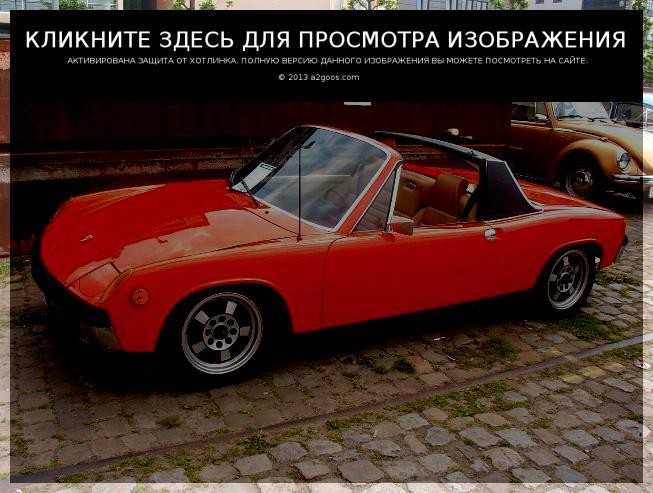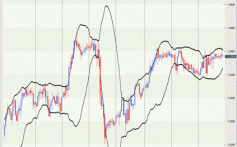The Porsche 914
Post on: 16 Март, 2015 No Comment

Source: Porsche via Bloomberg
Porsche Racing boss Ferdinand Piëch’s personal hot rod—with a race-prepped eight-cylinder engine. Close
The Porsche 914/6 was a failure.
In the late 1960s, Porsche was actively seeking a replacement for its popular entry-level car, the 912. Based on a convoluted agreement between Porsche and Volkswagen, dating back to the founding of both brands, Porsche had been contracted to create a new model that could serve both companies. The cars would share a body, but would have different, brand-specific engines and performance characteristics.
Sadly, this plan didn’t make good business sense for either company. Porsche felt that releasing the car would water down the exclusivity of their brand, and VW didn’t want to lend its economies of scale to production of a superior and competitive vehicle.
Eventually, a worst-case scenario compromise was reached. In Europe, both cars—a mild VW-engined four-cylinder and high-output Porsche-engined six-cylinder (the 914)—were marketed under the combined VW/Porsche rubric. “This caused quite some image problems,” says Dieter Landenberger, the manager of Porsche’s historical archives in Stuttgart, Germany. “For many people it was ‘the people’s Porsche,’ the volksPorsche. like the Volkswagen. They didn’t accept the 914 as a ‘true’ Porsche.” Sales suffered.
A United States Strategy
In the U.S. the problems were different. Here, both models were marketed strictly as Porsche vehicles. This ended up being a boon for American Porsche sales, with the 914 becoming the best-selling vehicle in the manufacturer’s lineup. But because of its specialized componentry, the high-output version of the car—the so-called 914/6—was nearly a third more expensive than its lesser counterpart. This put its cost within spitting distance of that of the least expensive variant of Porsche’s flagship model, the 911T.
“Between 1969 and 1976, almost 120,000 914s were sold. But only 3300 914/6s,” Landenberger says. “The reason for that was price.”
The 914 was also challenged by its design. Traditional Porsche buyers, used to the tall teardrop shape of the brand’s 356 and the 911, found the squat, wedgy, rectilinear 914 to be alienating. “It was a very unusual design,” Landenberger says. “Some people said it was too modernistic, too Bauhaus oriented.”
A 914 celebrates the start of spring in a field of crocuses. Source: Porsche via Bloomberg
We here at the Loot blog are not among those people. We find the car’s appearance to be extremely pure and honest. The ground-hugging stance gives the 914 a low center of gravity and excellent handling. Its nearly symmetrical hood and trunk sections pay homage to the fact that its engine is right in the middle, and provide capacious storage in front and rear boots. And the removable “targa” roof panel, which stores handily in the rear, gives the car a quasi-topless open-air feeling. A 914 is a blast to drive.
Investment Potential
The market agrees with our assessment, at least in part. Values on all 914s spiked then leveled some years back—according to Jonathan Klinger from collector car insurance company, Hagerty—on the strength of high auction sales in the first trickles of interest. But the 914/6 has continued and commanded this trend. Average prices for 914/6s are up 34% over the past five years, from $32,000 to $43,000.

This is based mainly on rarity—914/6s represent just 3% of all 914s produced. But it also follows a trend for the marque in general. “In the last 15 years, there’s been a kind of price explosion for classic Porsche cars,” Landenberger says. The trend has impacted the iconic 911 most markedly. But a rising tide carries all Porsches.
With its similar performance, engine, and sound—and often superior driving dynamics—the 914/6 becomes a sort of stealth way to get in on the Porsche mystique, without the six or seven figure outlay required of classic 911s. “It’s a perfect understatement car,” Landenberger says.
Even More Rare
If you want to delve one step deeper (into your pockets), Porsche also produced about 32 race-going variants of the 914/6, the 914/6 GT. These are down in price by about 10% off their high point five years ago, but the average cost has stabilized at nearly $200,000.
And if that isn’t rare enough for you, the Porsche museum where Landenberger works, owns the only existing pair of 914/8s, custom versions of the diminutive car with 8-cylinder racecar engines shoehorned in behind their seats. Both were made for Porsche family members, Ferry Porsche and Ferdinand Piëch, and are not for sale.
As with many collectible cars, there are tradeoffs between older original models, and later, updated ones. The 1970-72 914/6 may be the rarest, the most powerful, and the most rapidly appreciating. And they share the clean, chrome bumpers and minimal interiors of other earlier models. Later cars received significant upgrades in their transmission, engines, chassis, and interior creature comforts, making them sportier and more pleasant to drive, while their exterior was degraded slightly by heavy rubber bumpers required to meet new US crash standards.
914 Appreciation
Given the magic the marque commands at the auction block, depreciation seems highly unlikely. “While 914/6s continue to appreciate, regular 914’s have likely leveled out on price and will hold steady and have gradual gains in the coming years,” says Hagerty’s Klinger. And, as with many up and coming vintage vehicles, the growing nostalgia and buying power of Gen X and Gen Y is likely to enhance values in the long term. “Visitors to the museum like the 914 very much,” Landenberger says. “Many remember them from the 1970s and have a story about the car, a personal story.”
Press spacebar to pause and continue. Press esc to stop.














